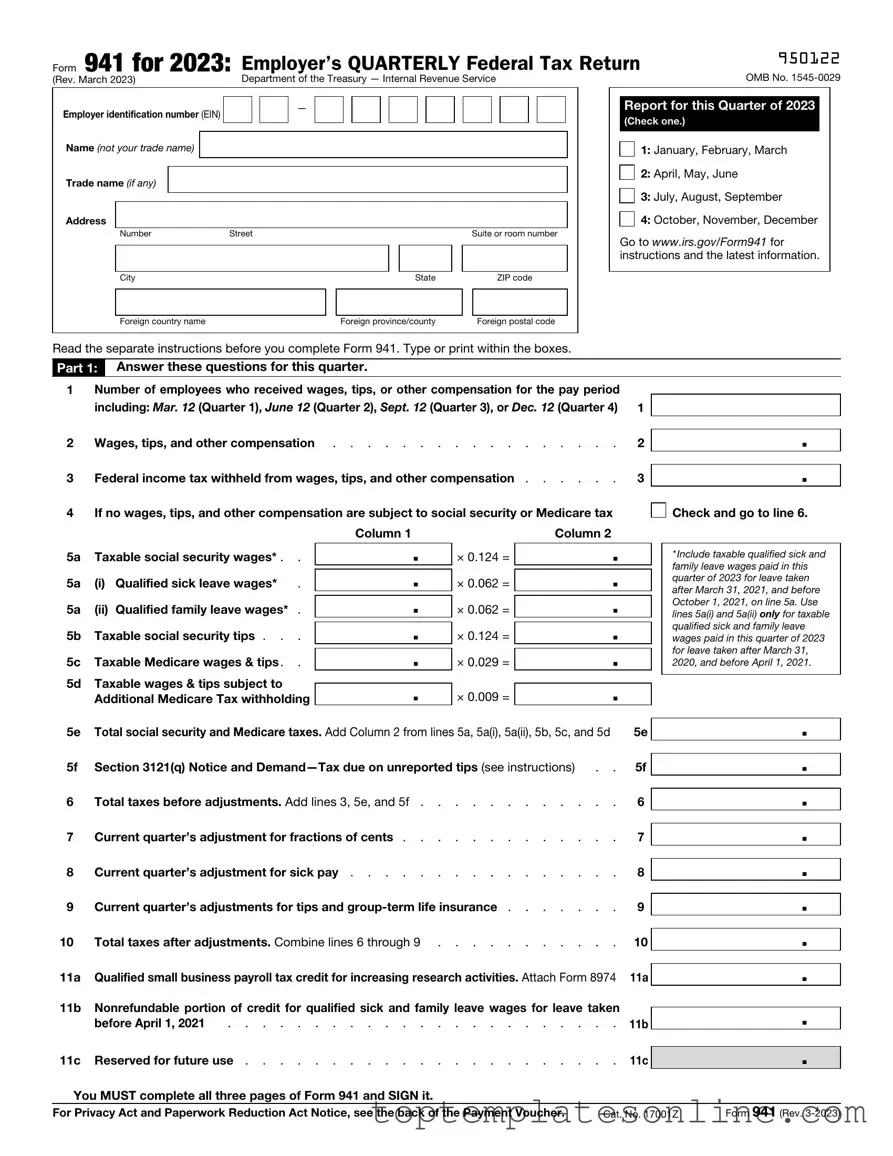Fillable IRS 941 Form
The IRS Form 941 is a quarterly tax form that employers use to report income taxes, Social Security tax, and Medicare tax withheld from employee paychecks. This form is essential for ensuring compliance with federal tax obligations and helps the IRS track tax liabilities. Understanding how to accurately complete and submit Form 941 is crucial for maintaining proper payroll practices.
Customize IRS 941 Here
